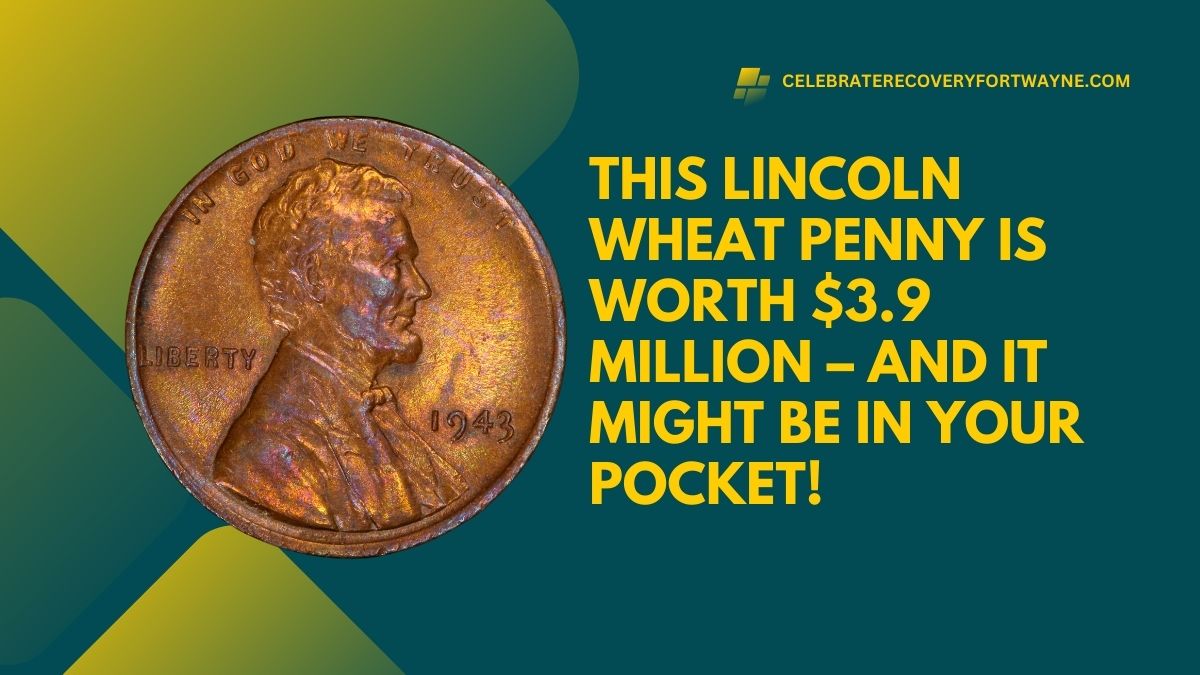A simple coin in your change jar could be worth a life-changing sum. One version of the Lincoln Wheat Penny, specifically the 1943 copper penny, has captured the attention of collectors and investors alike, with values climbing as high as $3.9 million in private sales.
While most 1943 pennies are common and made of steel, the rare copper variety is a numismatic treasure—and it’s possible that one is still out there.
Let’s dive into the details of this mysterious and incredibly valuable penny that might just be hiding in plain sight.
The Story Behind the $3.9 Million Penny
In 1943, the U.S. Mint shifted penny production from copper to zinc-coated steel to conserve copper for World War II efforts. However, a few copper blanks from 1942 were mistakenly used to mint a small batch of 1943 Lincoln Wheat Pennies.
The result? A minting error that created one of the rarest and most valuable coins in American history.
It’s believed that only 20 to 40 genuine copper 1943 pennies exist today. These coins have fetched hundreds of thousands—and even millions—at auctions and in private deals.
Depending on the condition and mintmark, the value can range from $100,000 to $3.9 million.
How to Identify a 1943 Copper Lincoln Wheat Penny
Think you’ve struck gold (or copper)? Here are some key features to check:
- Date: It must read 1943.
- Color: A reddish-brown copper appearance (not silver-gray like the steel pennies).
- Magnet Test: Steel pennies are magnetic; copper pennies are not.
- Weight: Copper pennies weigh about 3.11 grams, while steel versions weigh only 2.7 grams.
Most Valuable Lincoln Wheat Pennies
Here’s a table showcasing the rarest Lincoln Wheat Pennies and what they’ve sold for:
| Penny Type | Year | Key Feature | Estimated Value |
|---|---|---|---|
| 1943 Copper Penny | 1943 | Minted in copper by mistake | Up to $3.9 million |
| 1943-D Copper Penny | 1943 | Denver mint version | Over $1.7 million |
| 1909-S VDB | 1909 | First issue, designer initials | $50,000 to $100,000+ |
| 1914-D | 1914 | Low mintage | Up to $158,000 |
| 1955 Double Die | 1955 | Misaligned die causes doubling | Up to $50,000+ |
Why These Pennies Are Worth So Much
Several factors contribute to the skyrocketing value of certain Wheat Pennies:
- Rarity: Coins like the 1943 copper penny were minted accidentally in small quantities.
- Historical Significance: Wartime adjustments in materials created unique coins.
- Mint Marks: Coins from the San Francisco (S) or Denver (D) mints are sometimes rarer than those from Philadelphia.
- Condition: Uncirculated or mint-state coins fetch far more than worn examples.
Still in Circulation? It’s Possible!
Although rare, these valuable coins occasionally show up in estate sales, inherited collections, and even pocket change. A few of the known 1943 copper pennies were found in the 1980s and 1990s, proving that they can go undetected for decades.
Coin experts and collectors believe that more of these valuable coins could still be out there. That’s why it’s worth inspecting every penny in your change or coin jar—you never know what you might find.
The dream of finding a multi-million-dollar coin isn’t as far-fetched as it sounds. With just a little knowledge and a careful eye, anyone could stumble upon a 1943 copper Lincoln Wheat Penny, potentially worth up to $3.9 million.
So, before you toss that penny aside, take a moment to look at the date, color, and weight. That ordinary-looking coin could be your ticket to a small fortune.
FAQs
How do I know if my 1943 penny is copper or steel?
Do the magnet test—steel pennies stick to magnets, while copper ones don’t. You can also weigh the coin. Copper versions weigh about 3.11 grams.
What is the value of a 1943 copper penny?
Depending on its mintmark and condition, a 1943 copper penny can range from $100,000 to $3.9 million.
Are there fake 1943 copper pennies?
Yes. Some steel pennies are copper-plated to appear rare. Only authentic 1943 copper coins hold high value. Professional grading is recommended.




